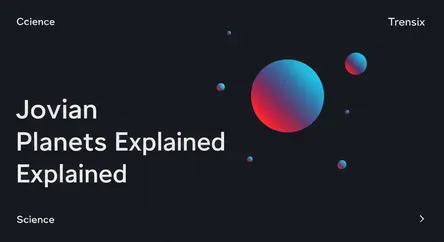Science
Jovian Planets Explained

Discover Jovian planets, the gas giants of our solar system like Jupiter and Saturn. Learn what defines these massive, low-density outer worlds.
What is it?
A Jovian planet, also known as a gas giant, is a large planet composed primarily of hydrogen, helium, and other volatile substances, lacking a solid surface. Our solar system contains four Jovian planets, all located in the outer regions: Jupiter, Saturn, Uranus, and Neptune. These worlds are characterized by their immense size, low density, and rapid rotation, which often creates dramatic weather patterns and strong magnetic fields. Unlike the rocky terrestrial planets, their cores are thought to be small and dense, surrounded by vast atmospheres that transition from gas to liquid under extreme pressure.
Why is it trending?
Jovian planets are consistently in the scientific spotlight due to ongoing exploration and discoveries. Missions like NASA's Juno at Jupiter and the James Webb Space Telescope (JWST) are providing unprecedented data on their complex atmospheres, mysterious auroras, and extensive systems of rings and moons. Furthermore, the study of exoplanets has revealed thousands of Jovian-type worlds orbiting other stars, including "Hot Jupiters" that challenge our theories of planet formation, keeping them a popular topic in astronomy.
How does it affect people?
While distant, Jovian planets have a profound effect on our solar system's stability. Jupiter's enormous gravitational pull has acted as a cosmic gatekeeper, shaping the asteroid belt and likely shielding Earth from countless devastating impacts throughout history. Studying their extreme atmospheres helps scientists model complex climate systems, providing insights applicable to Earth. Understanding how these giants formed is crucial to piecing together the origin story of our own solar system and the conditions that allow life to emerge.